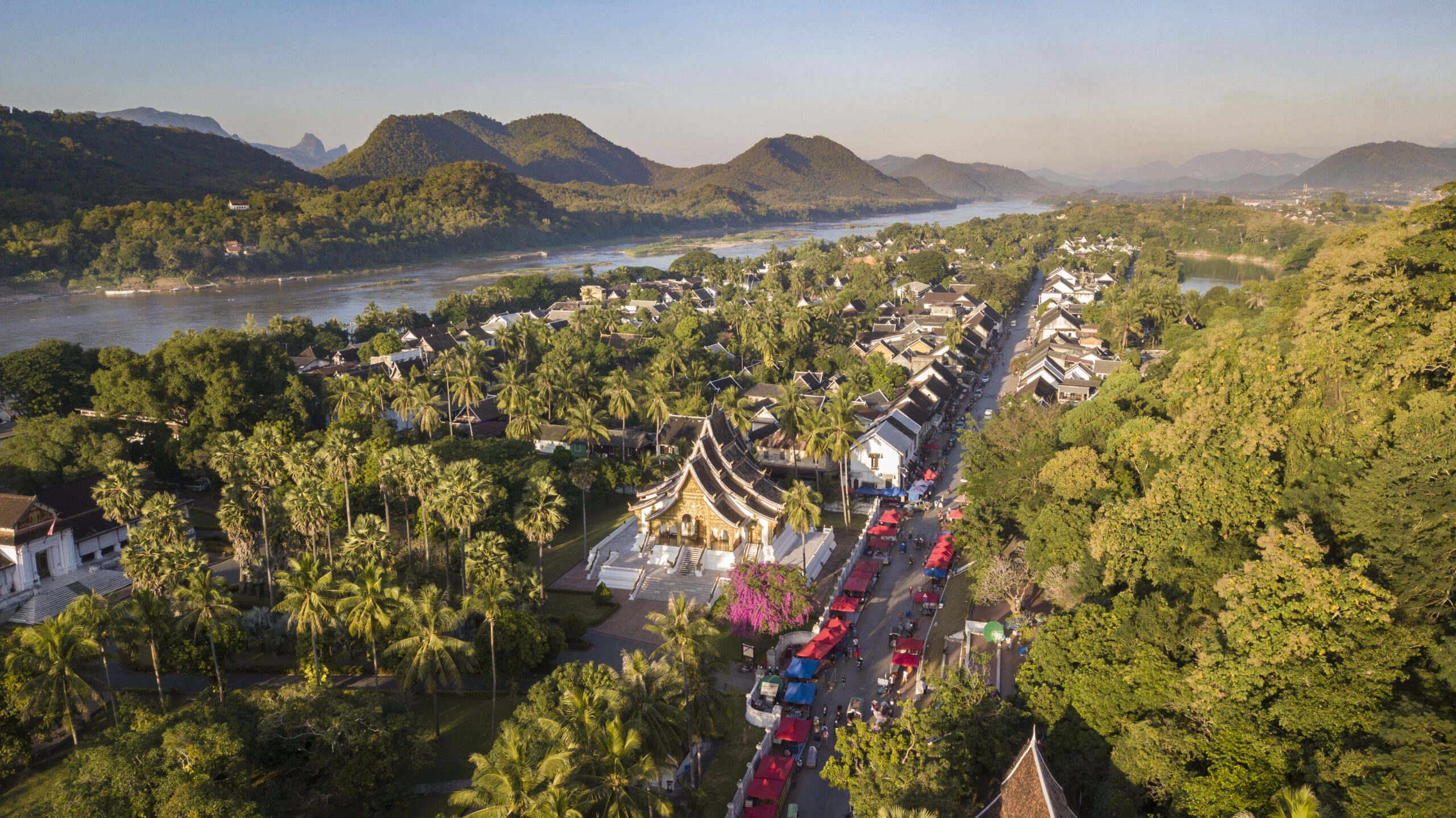The loom hums softly, weaving silk into stories of ancient craftsmanship. Each delicate filament catches the light, the weaver’s skill like silent poetry etched at every thread. At the heart of the Laos People’s Democratic Republic, in Luang Prabang, silk weaves stories as ancient as the Mekong’s gentle flow.
The town of Luang Prabang in north central Laos, literally meaning “Royal Buddha Image,” is a renowned destination as the former royal capital and seat of the Kingdom of Lao. It consists of 58 adjacent villages, 33 of which comprise the UNESCO World Heritage Site (listed in 1995). Tours around the town include visits and mentions of the unique culinary, folk arts and crafts, Theravada Buddhist temples, and Mekong tours, to name a few. Its unique, remarkably well-preserved townscape illustrates a key stage in blending these two distinct cultural traditions that create the distinctive DNA of this destination. There is, however, another reason tourists are attracted to Luang Prabang: the silk-making centers keeping ancestral knowledge and skills alive.
The Role of Geographic Indication (GI) in Promoting Luang Prabang Silk
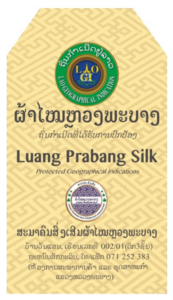
Luang Prabang silk, unique to the region, involves farming native silkworms (MonNoy) and mulberry trees. Farmers propagate the trees using cuttings while women weave the silk into textiles. The traditional silk-making process follows a production cycle free of synthetic fertilizers and pesticides. To dye the silk, local natural dyes from a variety of extracts from local plants, such as horm (indigo blue and light green), annatto seeds (orange and yellow), and rosewood bark, are used. Hand reeling makes the silk exceptionally soft, lustrous, and very different from factory-produced silk.
In recognition of its unique characteristics and a production process inherently tied to its natural geographical environment, Luang Prabang Silk has been accorded the status of a registered geographic indication (GI).
The textiles can be woven plain but can also be woven in intricate, beautiful, and colorful traditional designs and patterns that include ancient symbols, such as temples, birds, mythical serpents (Naga), elephants, other animals, and flowers. Many small weaving groups, such as the Tha-bouk and Tai-dam village weavers, are known to have their own unique designs that clients continually return to buy. A weaver from the Living Craft Center said they have many custom orders with clients willing to wait for months and that they “have great income and enjoy creating new designs from ancient motifs.”
The Economic Impact of GI on Local Silk Artisans
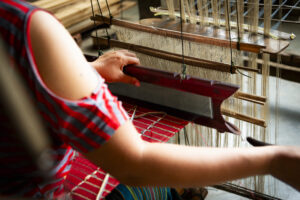
GI registration for Luang Prabang silk has brought additional revenue to weavers and job prospects for women in rural areas. The GI gives this silk textile added value in the international market, as it guarantees compliance with high-quality standards, including the intricacy of their traditional designs and patterns and painstaking process. The GI allows programs to push for more areas to cultivate mulberry trees and teach the silk weaving tradition to the youth, thereby preserving a living cultural heritage and creating job opportunities. Somchith Chaleunphonh, President of the Luang Prabang Silk Promotion Association, created in September 2020, shortly before the GI registration, says that some weavers rely on their weaving as their sole income, while “others are farmers and weave as a side job whenever they have free time, and some are government workers who weave during their spare time.” Veomanee Duangmala, Deputy President of the Luang Prabang Silk Promotion Association, said, “Silk weaving is small-scale due to its intricacies, and weavers cannot meet the demands. Very small quantities are exported, but domestic sales include tourists that buy directly from the weavers”.
In addition, the registration of the GI undoubtedly allowed members of the Association not only to sell more silk yarns and final products but also to earn more compared to their earnings before the registration of the GI. In fact, in 2019-2020, sales of silk yarns and finished products grew 2.8 times from US$24,395 before the registration of the GI to US$69,866 after GI registration.
Enhancing Tourism Through Authentic Cultural Experiences
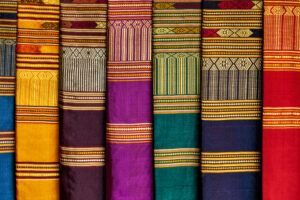
Silk weaving centers have developed into tourism destinations. One example is The Living Craft Center by Ock Pop Tok, set in a tropical garden by the Mekong and is only 2 km from the town center. Ock Pop Tok’s reputation continues to grow as one of the leading producers of Lao textiles and one of the best tourist attractions in Luang Prabang. The center provides guests and tourists with authentic cultural experiences and the chance to learn about Lao textiles and traditions firsthand. The center prides itself on helping elevate the profile and preservation of Laos’ textile heritage and increasing economic opportunities for the artisans and weavers. They offer classes on silk weaving, natural dyes, batik, and bamboo crafts making; tuk-tuk rides along the towns and Mekong; cuisine experiences of seasonal farm-to-table Lao and western menu inspired by the Silk Road cuisines.
Other tourist destinations for silk weaving in the Luang Prabang area are the XangKhong Cultural Village and the Phanom Weaving Center. Guests learn weaving on a traditional floor loom with one of the resident master weavers. They are guided by an introduction to silk, dying, and weaving techniques.
Preserving Cultural Heritage and Authenticity with GI Certification
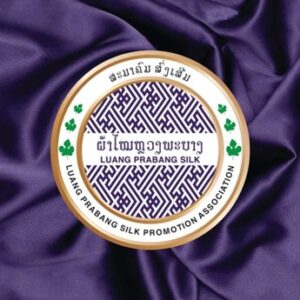
Tourists always seek out local, unique, and authentic products to take home. However, they often need more knowledge and information to recognize authentic Luang Prabang silk products from cheaper copies made in neighboring countries. The GI label acts as a powerful quality guarantee for them and as assurance that products carrying it are authentic Luang Prabang silk items, produced using the traditional hand-reeling process and only natural dyes and preserving the unique traditional patterns. Tours visiting Lao weavers producing the traditional Luang Prabang silk have risen in recent years, also thanks to the growing reputation of the registered GI.
The centers run by Luang Prabang Silk Promotion Association members receive domestic and international tourists who often purchase their exquisite traditional silk textiles. On the other hand, visitors, by spending a marvelous holiday in the magic atmosphere of Luang Prabang, support the entire local economy by booking accommodations in one of its numerous hotels and bed and breakfasts by having memorable dinners at some of the local restaurants, by going to SPAS and massage centers, buying souvenirs, etc.



